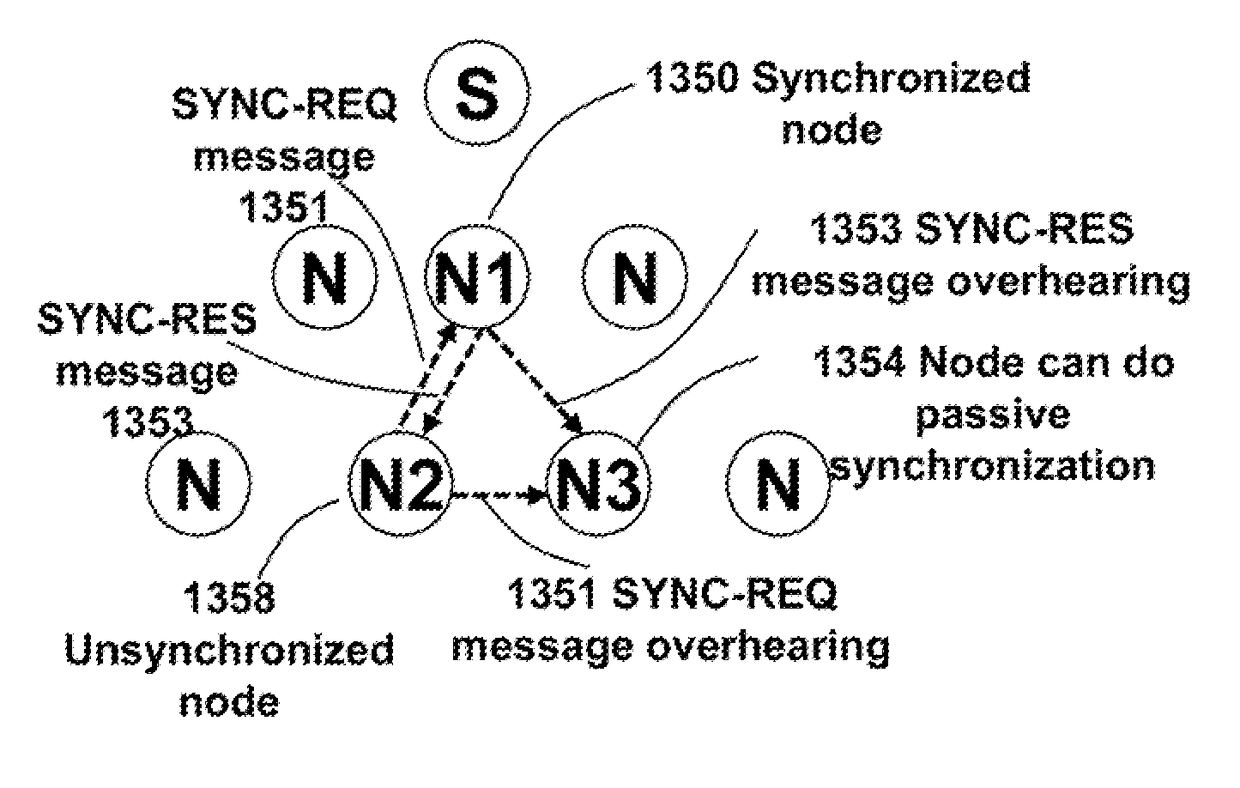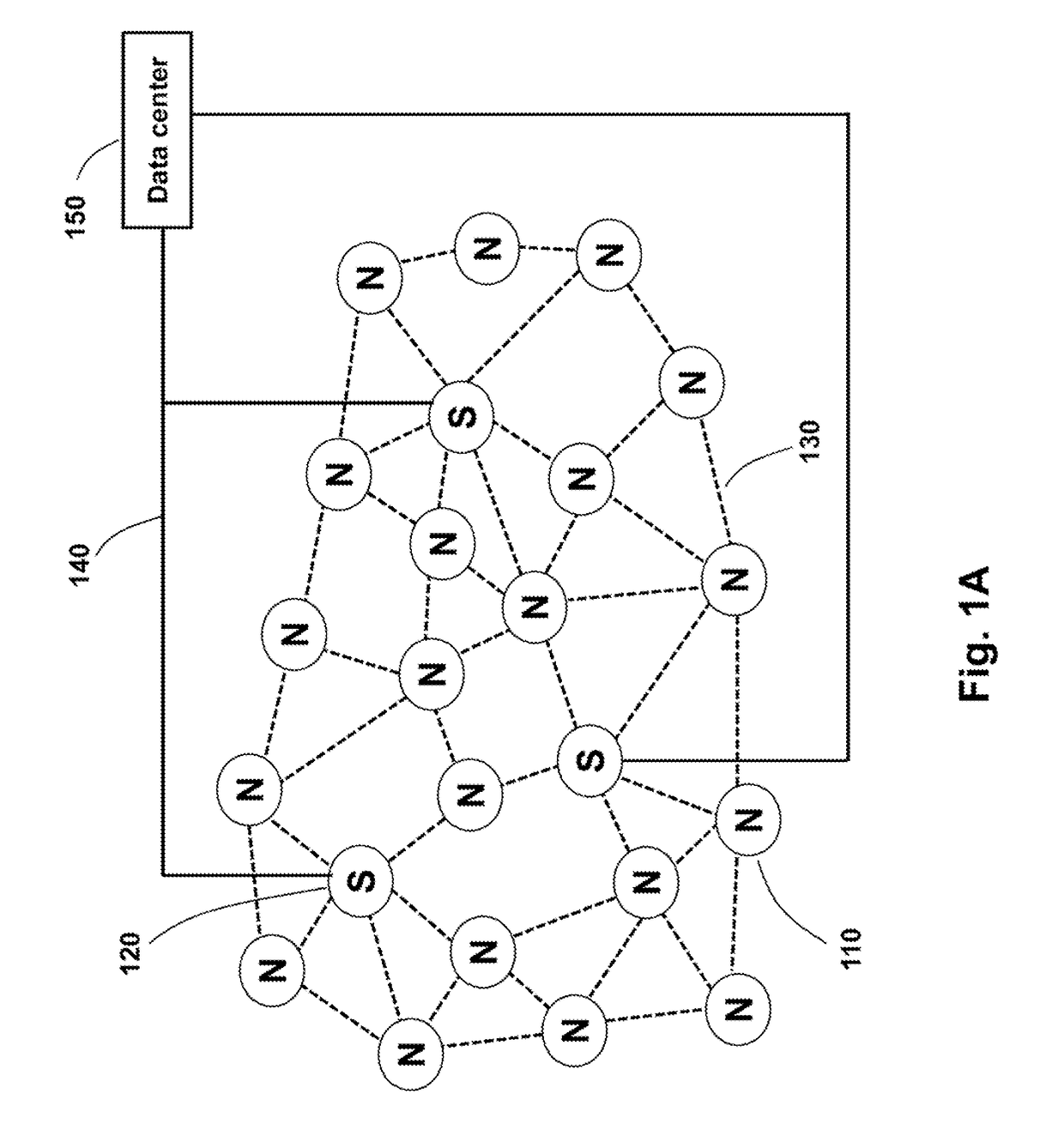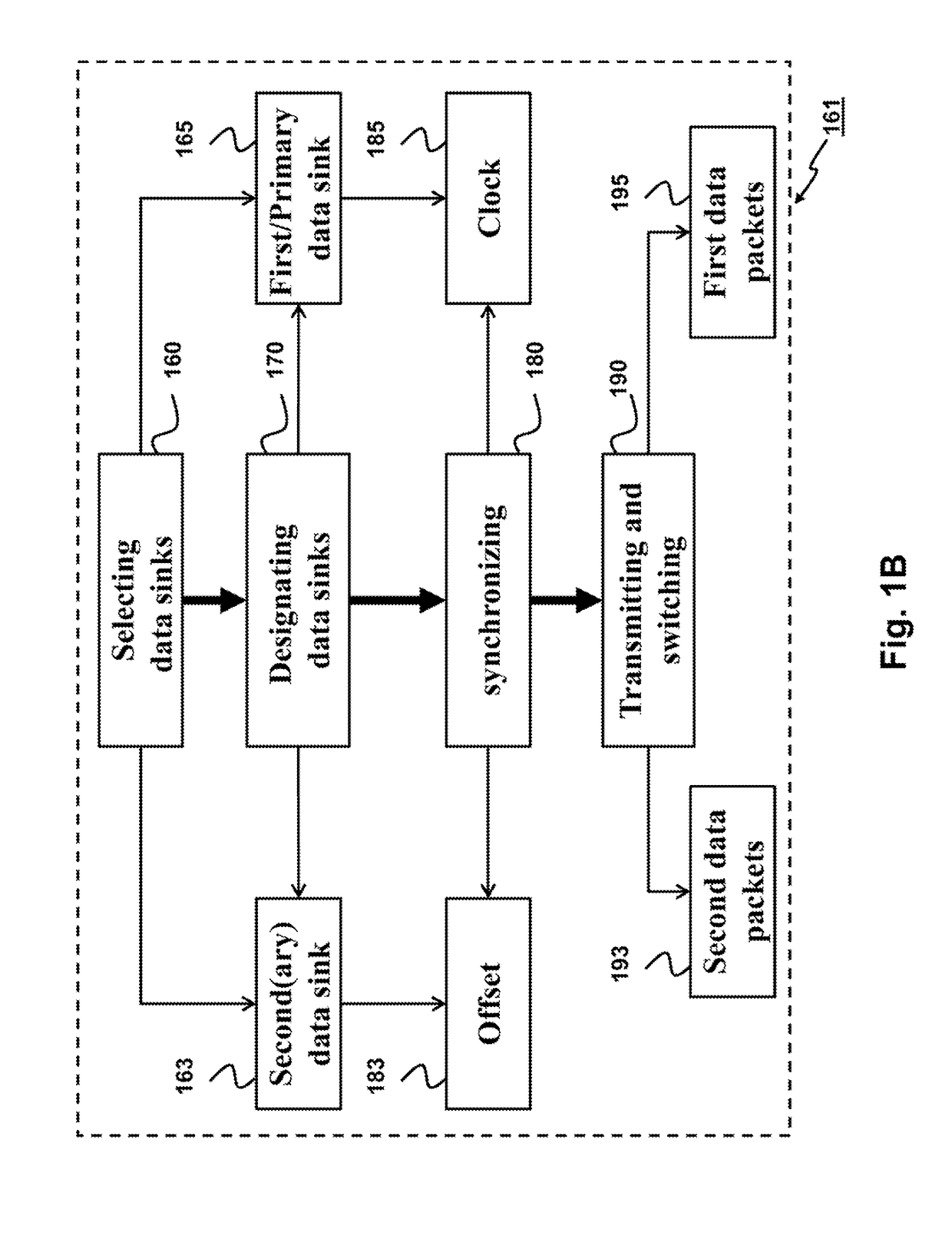Synchronized multi-sink routing for wireless networks
a wireless network and multi-sink technology, applied in the direction of synchronisation arrangement, sustainable buildings, high-level techniques, etc., can solve the problems of increasing the delay of the synchronization process, and achieve the effect of improving network throughput, prolonging the network operating duration, and increasing energy efficiency
- Summary
- Abstract
- Description
- Claims
- Application Information
AI Technical Summary
Benefits of technology
Problems solved by technology
Method used
Image
Examples
Embodiment Construction
[0041]FIG. 1A shows a schematic of a low power and lossy network (LLN), in which some embodiments of the invention operate. Although some embodiments are described for a LLN, it understood that various embodiments of the invention can be used with other types of wireless networks, such as smart meter networks, sensor networks, and networks used for industrial automation, building and home automation, and environment monitoring.
[0042]The network includes of a set of nodes (N) 110 and a set of data sinks (S) 120. The nodes and sinks form a mesh topology and communicate using wireless links 130. To ensure connectivity, the nodes are arranged such that each node has at least one neighbor. Each node in the LLN transmits packets, such as data packets and control packets through one or multiple links to one or more of data sinks. A node can also forward packets received from neighboring nodes towards the data sinks. The data sink transmits packets, such as routing packets and control packe...
PUM
 Login to View More
Login to View More Abstract
Description
Claims
Application Information
 Login to View More
Login to View More - R&D
- Intellectual Property
- Life Sciences
- Materials
- Tech Scout
- Unparalleled Data Quality
- Higher Quality Content
- 60% Fewer Hallucinations
Browse by: Latest US Patents, China's latest patents, Technical Efficacy Thesaurus, Application Domain, Technology Topic, Popular Technical Reports.
© 2025 PatSnap. All rights reserved.Legal|Privacy policy|Modern Slavery Act Transparency Statement|Sitemap|About US| Contact US: help@patsnap.com



